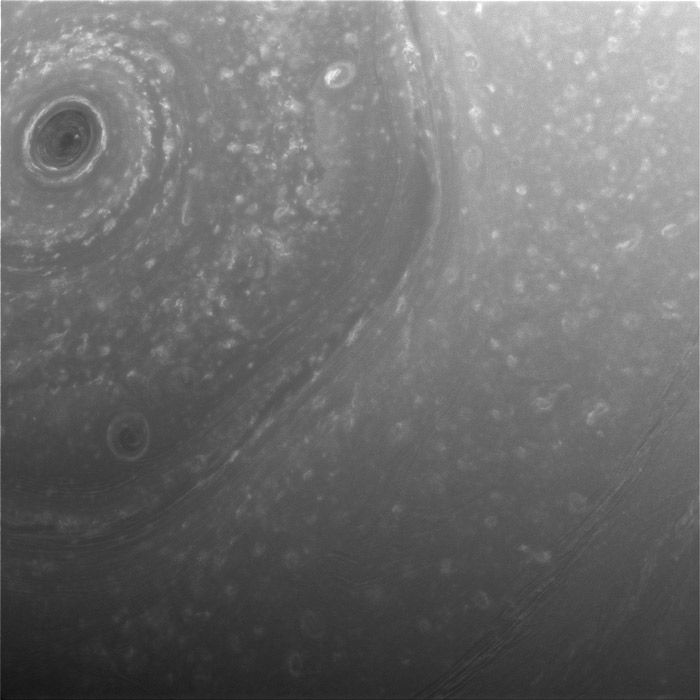Check Out New Pictures of Saturn From Cassini’s Latest Orbit
New images of the ringed planet herald the spacecraft’s demise
/https://tf-cmsv2-smithsonianmag-media.s3.amazonaws.com/filer/38/99/3899d00a-4bd1-4235-a889-80c2e6062363/pia21053.jpg)
After roughly 12 years of taking pictures and beaming back data about Saturn, NASA’s Cassini spacecraft's epic adventure is coming to an end. The spacecraft has recently moved into its last orbit before it takes a final plunge into Saturn’s atmosphere towards the end of 2017. Luckily, researchers here on Earth are already seeing the fruits of Cassini’s goodbye tour in a magnificent series of images of Saturn’s north pole.
"This is it, the beginning of the end of our historic exploration of Saturn,” Carolyn Porco, head researcher for the Cassini imaging team at the Space Science Institute in Boulder, Colorado, says in a statement. “Let these images—and those to come—remind you that we’ve lived a bold and daring adventure around the solar system’s most magnificent planet."
Earlier this month, Cassini entered what NASA calls its “Ring-Grazing Orbits,” which will take the little spacecraft in for a close-up look at the gas giant and it’s iconic rings. In the process, it has been able to take some of the most detailed pictures of Saturn that scientists have examined yet, including the hexagonal-shaped jet stream that caps its north pole, Paul Rincon reports for the BBC.
These images, taken on December 2 and 3, are from the first step in Cassini’s new orbit. First, the spacecraft is taking a big swing over Saturn’s north pole before it takes a steep dive down past the edge of the planet’s main rings, Loren Grush reports for The Verge. By using different filters, Cassini’s cameras were able to peer through several layers of gas to create this series of images that NASA has released as a collage.
In addition to skimming past the rings, Porco and her team are looking forward to new shots of Saturn’s moons, most of which are located near the edge of the gas giant’s main rings. In the process of taking these dives, Cassini will send back the closest-ever photographs of the planet’s rings as well as its smaller moons, Maddie Stone reports for Gizmodo.
While these are just the first images retrieved from Cassini since entering its new orbit, they are far from the last. The spacecraft is scheduled to keep diving in and out of Saturn’s rings and past the planet until April 22, when a well-timed slingshot past the moon Titan will bring Cassini into its final path. From there, it will keep circling Saturn at an even closer distance, until it finally dives into the gas giant’s atmosphere and destroys itself in the process, Rincon reports.
Until then, Cassini will continue its mission, beaming back valuable information that will help scientists better understand one of the largest planets in our cosmic backyard.
